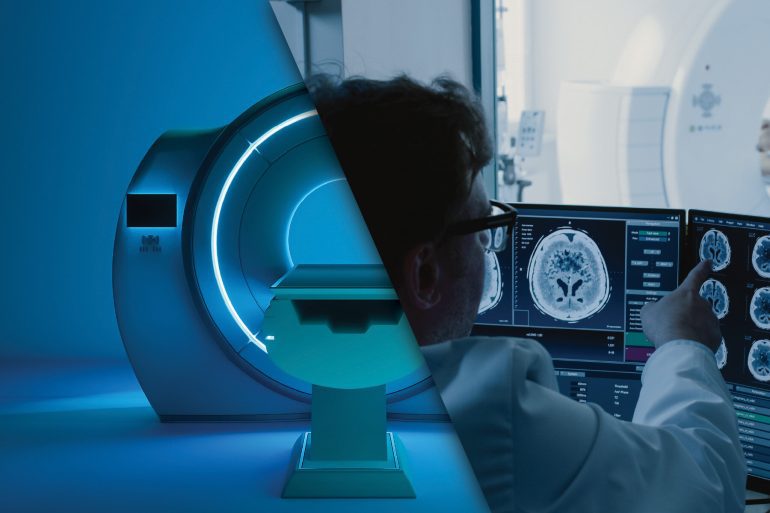- Recent research highlights machine learning’s role in developing cost-effective and safer low-power MRI systems.
- Traditional MRI technology, despite its benefits, faces accessibility challenges due to high costs and specialized infrastructure requirements.
- Yujiao Zhao and team introduce a low-power ULF MRI system, eliminating the need for RF or magnetic shielding and operating on standard wall power outlets.
- The system employs a compact 0.05 Tesla magnet and utilizes active sensing and deep learning algorithms to enhance imaging quality.
- This ULF MRI system consumes significantly less power compared to conventional MRI machines while producing clear and detailed images.
- Challenges remain in advancing low-field MRI technology for widespread clinical use, as noted by Udunna Anazodo and Stefan du Plessis.
Main AI News:
Recent research indicates that leveraging machine learning leads to more affordable and safer low-power magnetic resonance imaging (MRI) systems while maintaining diagnostic precision. This development heralds a new era of patient-centric, cost-effective ultra-low-field (ULF) MRI scanners, addressing critical healthcare needs across various settings globally.
MRI technology has transformed healthcare by providing noninvasive, radiation-free imaging, with artificial intelligence promising further advancements in medical diagnosis. Despite over fifty years of evolution, MRI accessibility remains a challenge, particularly in low- and middle-income countries. The prohibitive costs of traditional superconducting MRI units and the specialized infrastructure they demand limit widespread adoption. These machines are typically confined to specialized radiology departments or large imaging centers, restricting availability in smaller healthcare facilities. Additionally, the necessity for RF-shielded environments and high power consumption further hinders MRI accessibility.
To mitigate these challenges, Yujiao Zhao and collaborators introduce a low-power ULF MRI system that operates using standard wall power outlets, eliminating the need for RF or magnetic shielding. Featuring a compact 0.05 Tesla (T) magnet (in contrast to the typical 1.5 T or higher magnets in conventional MRI devices), the system employs active sensing and deep learning algorithms to mitigate electromagnetic interference and enhance imaging quality. Remarkably, this device consumes a mere 1800 watts (W) during operation, significantly less than the 25000 W or more consumed by conventional MRI machines.
In their study involving imaging of healthy volunteers, Zhao et al. demonstrate that their ULF MRI system produces clear and detailed images comparable to those obtained from high-power MRI units commonly used in clinical practice. However, Udunna Anazodo and Stefan du Plessis, in a related Perspective, caution that certain limitations and challenges must be addressed before low-field MRI becomes ubiquitous in clinical settings. They note, “The evolution of low-field MRI to offer cost-effective imaging solutions must progress further. Its viability as an indispensable and environmentally sustainable healthcare tool will be fully realized when communities worldwide can seamlessly access low-field MRI technology.“
Conclusion:
The integration of machine learning in MRI technology represents a significant breakthrough, making MRI more accessible and cost-effective. This innovation has the potential to disrupt the MRI market by offering solutions that cater to diverse healthcare settings globally, while also driving advancements in patient-centric care. As low-power MRI systems become more prevalent, traditional MRI manufacturers may need to adapt their offerings to remain competitive in a changing market landscape.

